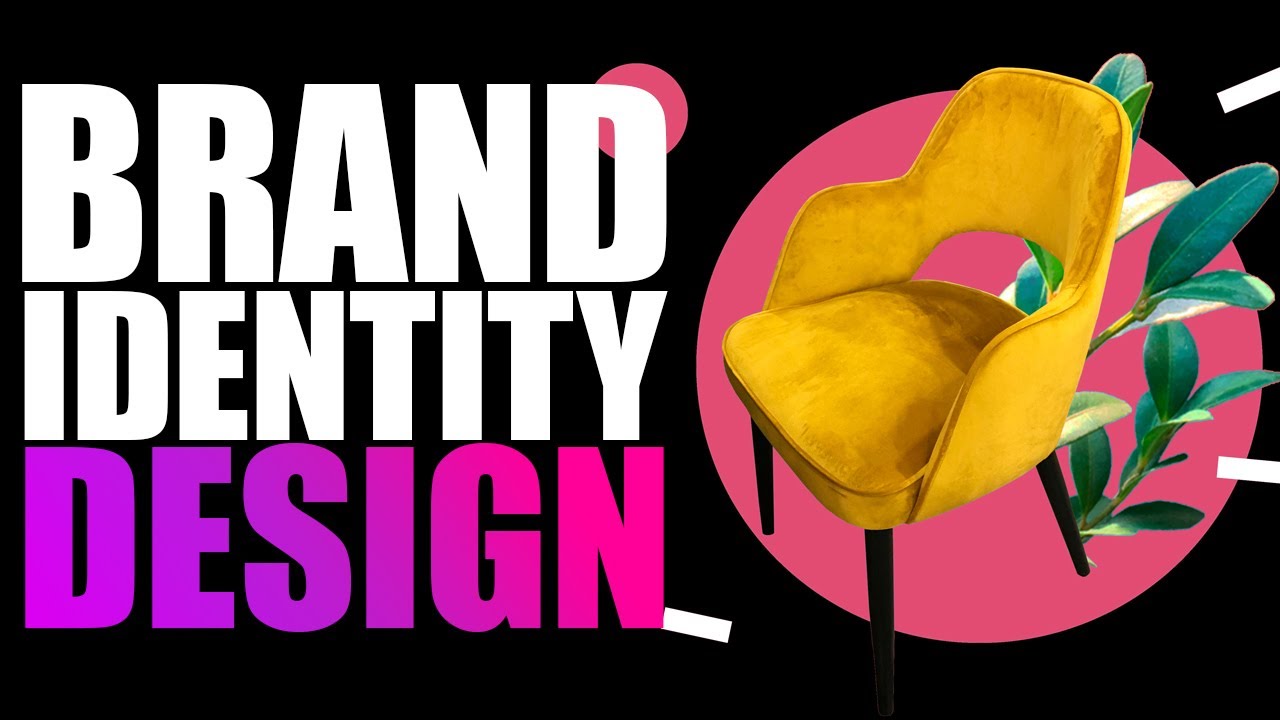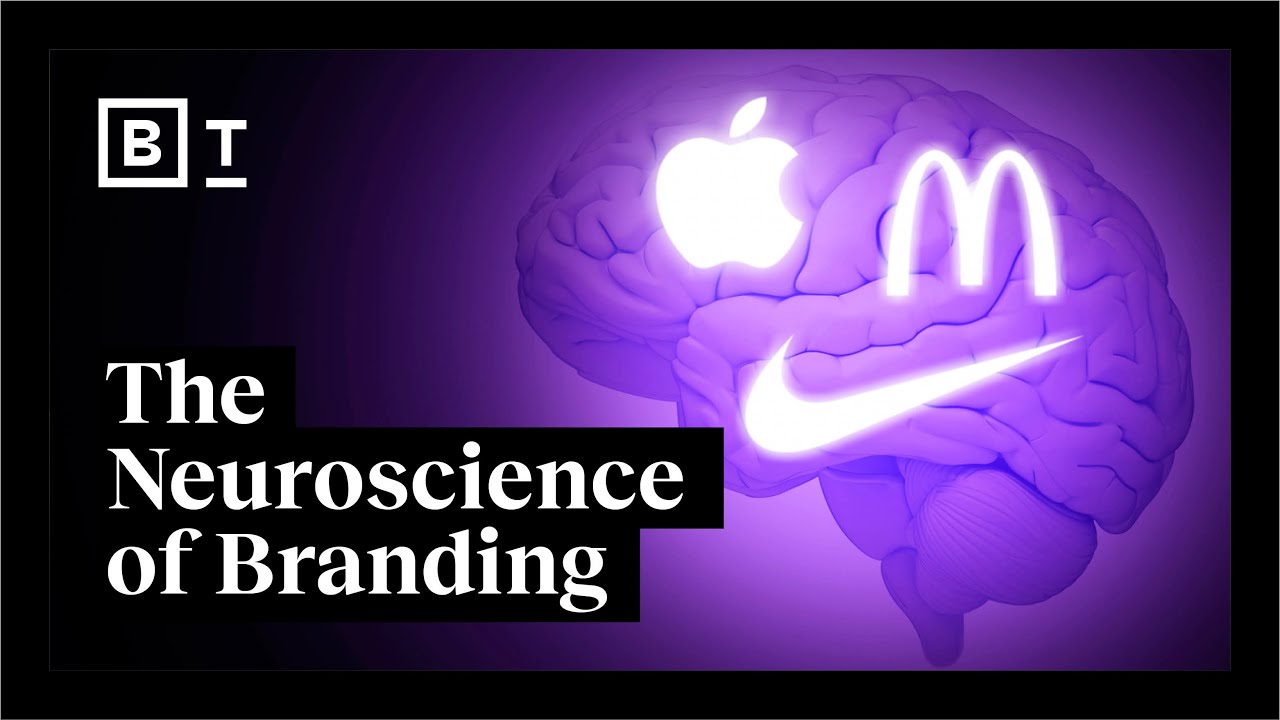In today's competitive businesslandscape, establishing a strong brand entityis essential for success. A brand entitygoes beyond a logo or visual elements; it encompasses the collective perception, reputation, and identity of a brand in the minds of consumers. It is the culmination of various elements, including brand values, personality, visual branding, and the overall customer experience.
A well-defined brand entity not only sets a company apart from its competitors but also builds trust, loyalty, and a lasting impression among customers. In this article, we will explore the key components involved in creating a compelling brand entity and how it can contribute to the growth and success of a business.
What Is Brand Entity?

What Is Branding? 4 Minute Crash Course.
Brand entity or brand identity refers to the collection of visual and conceptual elements that distinguish a brand and help shape its perception in the minds of consumers. It is the representation of a brand's personality, values, and purpose, communicated through various tangible and intangible elements.
Brand entity encompasses visual elements such as logo, typography, color palette, and design, as well as brand messaging, tone of voice, and overall brand experience. It serves as the foundation for how a brand presents itself to the world and influences how consumers perceive and interact with the brand. A strong brand entity helps differentiate a brand from its competitors, build brand recognition and loyalty, and create a consistent and cohesive brand experience for consumers.
Importance Of Brand Entity

The Importance of Branding in a Noisy Social World
Brand entity or brand image is of utmost importance for businesses. Here are some key reasons why it holds significance:
- Differentiation -In a crowded market, a strong brand entity helps businesses stand out from the competition. It allows them to create a unique and distinct image that sets them apart. By establishing a clear and recognizable brand entity, businesses can attract the attention of their target audience and differentiate themselves in the market.
- Brand Recognition -A strong brand entity contributes to better brand recognition. When customers can easily identify and recall a brand based on its distinct visual elements, messaging, and overall experience, it reinforces their connection and familiarity with the brand. This recognition leads to increased trust and loyalty among customers.
- Customer Trust and Loyalty -A well-defined brand entity helps build customer trust and loyalty. When customers perceive a brand as consistent, reliable, and aligned with their values, they are more likely to develop a strong emotional connection with the brand. This emotional connection fosters loyalty and encourages repeat purchases, as customers trust the brand to deliver on its promises consistently.
- Perceived Value -A strong brand entity allows businesses to command a premium and create a perception of higher value in the minds of customers. When customers associate a brand with positive attributes, quality, and differentiation, they are willing to pay more for the products or services offered. A well-established brand identity helps communicate the value proposition effectively, leading to increased perceived value.
- Brand Advocacy -A compelling brand entity inspires brand advocates who become loyal fans and promoters of the brand. When customers align with a brand's values, personality, and overall identity, they are more likely to share their positive experiences with others. This word-of-mouth marketing and brand advocacy can significantly contribute to the growth and success of a business.
A strong brand identity or brand entity is vital for businesses as it differentiates them from competitors, enhances brand recognition, builds customer trust and loyalty, creates perceived value, and fosters brand advocacy. It serves as a powerful tool for attracting and retaining customers, establishing a competitive edge, and cultivating a positive brand image in the market.
Elements Of Brand Entity

10 Brand Identity Design Elements For Strategic Branding
Brand entity encompasses various components that contribute to shaping the perception and recognition of a brand. Here are key elements commonly associated with brand entity:
- Brand Name -The name by which a brand is known and recognized. It should be unique, memorable, and aligned with the brand's values and offerings.
- Logo -A visual representation that symbolizes the brand. A well-designed logo creates a strong visual identity and helps customers easily identify and associate with the brand.
- Color Palette -A defined set of colors that are consistently used across brand materials. Colors evoke emotions and contribute to brand recognition and consistency.
- Typography -The selection of fonts used in brand communications. Typography helps establish a distinctive visual identity and supports the brand's tone and personality.
- Visual Imagery -Visual elements, such as photographs, illustrations, or graphics, that reflect the brand's style and identity. These visuals contribute to conveying the brand's message and personality.
- Brand Voice -The tone, language, and style of communication used by the brand. It shapes the way the brand communicates with its audience and contributes to its overall personality and identity.
- Brand Values -The core principles and beliefs that guide the brand's actions and decisions. Brand values help define the brand's purpose and the value it provides to its customers.
- Brand Story -The narrative that communicates the brand's history, values, and mission. A compelling brand story helps connect with the audience and establishes an emotional connection.
- Tagline/Slogan -A concise and memorable phrase that captures the essence of the brand and its key message. It reinforces the brand's identity and differentiates it from competitors.
- Brand Experience -The overall experience customers have when interacting with the brand. This includes every touchpoint, such as the website, packaging, customer service, and physical locations. Consistency in brand experience is crucial to establishing a strong brand identity.
These elements collectively contribute to creating a brand's entity and influence how customers perceive and connect with the brand. By defining and consistently implementing these elements, businesses can establish a distinctive and memorable brand entity.
How To Establish Brand Entity?

Creating a Brand Identity: From Start to Finish
Establishing a strong brand entity involves strategic planning, thoughtful execution, and consistent implementation. Here are key steps to help you establish a compelling brand entity:
- Define Your Brand -Start by defining your brand's purpose, values, and personality. Clearly articulate what your brand stands for and the unique value it offers to customers. This foundation will guide all aspects of your brand entity.
- Research Your Target Audience -Gain a deep understanding of your target audience, their preferences, needs, and aspirations. Identify their pain points and desires to align your brand entity with their expectations and establish a strong connection.
- Craft Your Visual Identity -Develop a visually appealing and cohesive brand identity. Design a logo that captures the essence of your brand and create a color palette and typography that align with your brand personality. Ensure consistency in visual elements across all brand touchpoints.
- Craft Your Brand Voice -Define your brand's tone of voice, language style, and messaging. Create a consistent brand voice that resonates with your target audience and reflects your brand's personality, values, and positioning.
- Develop Brand Guidelines -Establish clear brand guidelines that outline the proper usage of your visual identity, brand voice, and other brand elements. These guidelines will ensure consistency and provide a reference for anyone creating brand-related materials.
- Deliver Consistent Brand Experience -Implement your brand entity consistently across all customer touchpoints. This includes your website, social mediaprofiles, marketing materials, packaging, and customer service interactions. Provide a consistent and cohesive experience that aligns with your brand values.
- Engage Employees as Brand Ambassadors -Ensure that your employees understand and embody your brand entity. Train them on your brand values, personality, and voice. Encourage them to become brand ambassadors and deliver a consistent brand experience in their interactions with customers.
- Monitor and Adapt -Regularly assess the effectiveness of your brand entity and gather feedback from customers and stakeholders. Monitor market trends and evolving customer preferences. Make adjustments and improvements to your brand entity as needed to stay relevant and resonate with your target audience.
- Build Brand Awareness -Implement targeted marketing and communication strategies to increase brand awareness. Utilize various channels, such as social media, content marketing, advertising, and public relations, to amplify your brand message and reach a wider audience.
- Consistently Reinforce Your Brand Entity -Continuously reinforce your brand entity through ongoing marketing efforts, customer engagement, and brand storytelling. Consistency and repetition will solidify your brand identity and help it become ingrained in the minds of your target audience.
Remember, building a strong brand entity is a continuous process that requires ongoing efforts to maintain and adapt to changing market dynamics and customer preferences. Stay true to your brand's core values while being flexible and responsive to evolving needs and trends.
Implementing Brand Entity

21 Brand Building Process Steps (Branding To Marketing)
Implementing a brand entity involves translating your brand's identity and elements into actionable strategies and consistent execution. Here are key steps to effectively implement your brand entity:
- Internal Alignment -Ensure that all stakeholders, including employees and key decision-makers, have a clear understanding of the brand entity. Communicate the brand values, personality, and visual identity to align everyone with the brand's essence.
- Consistent Visual Branding-Apply your visual identity consistently across all brand materials, including logos, typography, color palette, and design elements. Use brand guidelines to maintain visual consistency and ensure that all branded assets reflect your brand entity accurately.
- Brand Messaging -Develop a clear and consistent brand messaging framework. Craft key brand messages, taglines, and value propositions that align with your brand entity. Ensure that your brand messaging resonates with your target audience and effectively communicates your brand's unique selling points.
- Customer Experience -Align your customer experience with your brand entity. Design touchpoints, such as website, packaging, in-store experience, and customer service, to reflect your brand's personality and values. Create a cohesive and positive brand experience that consistently delivers on your brand promise.
- Employee Training and Engagement -Train employees on your brand entity to ensure they understand the brand values, voice, and visual elements. Foster a sense of ownership and pride among employees, encouraging them to embody the brand entity in their interactions with customers and stakeholders.
- External Communication - Develop a comprehensive communication planto consistently and effectively convey your brand entity to external audiences. Utilize various channels such as advertising, social media, PR, and contentmarketing to communicate your brand's story, values, and unique identity.
- Brand Partnerships-Seek opportunities for brand partnerships that align with your brand entity. Collaborate with other businesses or influencerswhose values and audiences resonate with your brand. These partnerships can help amplify your brand message and reach new audiences.
- Measure and Refine -Regularly evaluate the effectiveness of your brand implementation efforts. Use metrics such as brand awareness, customer feedback, and market research to assess how well your brand entity is perceived and resonates with your target audience. Make necessary refinements to improve and strengthen your brand implementation.
- Brand Governance -Establish brand governance mechanisms to ensure consistent implementation of your brand entity across all touchpoints. Monitor and enforce brand guidelines, review brand communications, and provide ongoing support and guidance to maintain brand consistency.
Remember that successfully implementing your brand entity requires a long-term commitment and consistent effort. It is an ongoing process that requires monitoring, adaptation, and nurturing to ensure your brand identity remains strong and resonates with your target audience.
Evolving And Adapting Brand Entity
Evolving and adapting your brand entity is essential to staying relevant, meeting changing customer expectations, and sustaining long-term success. Here are key steps to effectively evolve and adapt your brand entity:
- Market Research and Analysis - Stay informed about market trends, customer insights, and competitor activities. Conduct regular market research to understand evolving customer preferences, needs, and expectations. Analyze the data to identify opportunities and areas for improvement.
- Customer Feedback and Insights -Gather feedback from your customers through surveys, focus groups, social media listening, and customer support interactions. Actively listen to their needs, concerns, and suggestions. Use this feedback to identify areas where your brand entity may need adjustments or enhancements.
- Brand Audit -Conduct periodic brand audits to assess the effectiveness of your brand entity. Evaluate how well your brand values, messaging, visual identity, and customer experience align with your target audience and business goals. Identify any gaps or inconsistencies that need to be addressed.
- Revisit Brand Strategy -Review and refine your brand strategy to ensure it aligns with your evolving business objectives and market conditions. Assess if your brand positioning, target audience, and competitive differentiation need adjustments. Clarify your brand's unique value proposition and desired perception.
- Brand Refresh or Rebrand -If significant changes are needed, consider a brand refresh or rebrandingprocess. This may involve updating your visual identity, revisiting your brand messaging, or even repositioning your brand in the market. However, it's important to carefully evaluate the impact and potential risks of such changes.
- Communication and Transparency -Transparently communicate any updates or changes to your brand entity to your customers, employees, and other stakeholders. Clearly articulate the reasons behind the evolution or adaptation and how it will benefit them. Maintain open lines of communication to address any concerns or questions.
- Consistent Implementation -Ensure that any updates or adaptations to your brand entity are consistently implemented across all touchpoints and channels. Update your visual identity, brand messaging, website, social media profiles, and other brand materials to reflect the evolved brand entity.
- Employee Alignment and Training -Engage and train your employees to understand and embrace the evolved brand entity. Communicate the changes, explain the rationale, and provide guidance on how they can embody and communicate the updated brand identity in their roles.
- Monitor and Measure -Continuously monitor the impact of the evolved brand entity on key brand metrics, customer perception, and business performance. Use analytics, surveys, and customer feedback to evaluate the effectiveness of the changes. Make data-driven decisions to further refine and optimize your brand entity.
- Stay Agile and Responsive -Recognize that brand evolution is an ongoing process. Stay agile and responsive to changes in the market, customer preferences, and industry trends. Continually seek feedback, monitor the competitive landscape, and be willing to adapt your brand entity to ensure it remains relevant and resonates with your target audience.
Examples Of Successful Brand Entities

How Apple and Nike have branded your brain | Your Brain on Money | Big Think
There are numerous examples of successful brand entities that have effectively established a strong and distinctive brand identity. Here are a few notable examples:
- Apple -Apple has created a powerful brand entity centered around innovation, simplicity, and a seamless user experience. From its minimalist logo to its sleek product designs, Apple has consistently delivered on its brand promise of user-friendly technology and high-quality products. Their brand entity has helped them cultivate a loyal customer base and establish themselves as a leader in the techindustry.
- Nike -Nike has built a brand entity that is synonymous with athleticism, empowerment, and performance. Their iconic "swoosh" logo, the powerful tagline "Just Do It," and endorsements by top athletes have created a strong brand identity that resonates with sports enthusiasts. Nike's brand entity inspires consumers to push their limits and embrace a "just do it" attitude.
- Coca-Cola -Coca-Cola has crafted a brand entity that is rooted in happiness, togetherness, and refreshing moments. Their timeless logo, distinctive red color, and memorable advertising campaigns have solidified their brand identity as a provider of joy and shared experiences. Coca-Cola's brand entity has helped them maintain a strong global presence and connect with consumers across generations.
- Tesla- Tesla has established a brand entity that represents cutting-edge technology, sustainability, and innovation in the automotive industry. With their sleek electric cars, forward-thinking approach, and visionary leader Elon Musk, Tesla has created a brand that appeals to environmentally-conscious consumers seeking a premium and futuristic driving experience.
- Starbucks -Starbucks has created a brand entity focused on the experience of enjoying premium coffee in a welcoming and cozy environment. Their recognizable green mermaid logo, consistent store design, and personalized customer service contribute to their brand identity of being a "third place" between home and work. Starbucks has successfully built a brand entity that encourages customers to connect, relax, and indulge in the Starbucks experience.
People Also Ask
What Is A Brand Entity?
A brand entity refers to the collective perception, reputation, and identity of a brand in the minds of consumers. It encompasses various elements, including brand values, personality, visual branding, and the overall customer experience.
Why Is Brand Entity Important For Businesses?
Brand entity is important for businesses as it helps differentiate them from competitors, build customer trust and loyalty, create emotional connections with the audience, and contribute to long-term success and growth.
How Does Brand Entity Impact Consumer Behavior?
Brand entity influences consumer behavior by shaping their perception of a brand. A strong brand entity builds trust and familiarity, creates positive emotions, and influences purchase decisions, ultimately leading to brand loyalty and advocacy.
Conclusion
A strong brand entity is a powerful asset that can differentiate a business, build customer trust, and foster long-term success. Coupled with exceptional customer experiences and personalized interactions, a brand entity creates emotional connections and cultivates brand advocates. Moreover, by continuously evolving and adapting to changing market dynamics, a brand entity can remain relevant and resonate with its target audience.